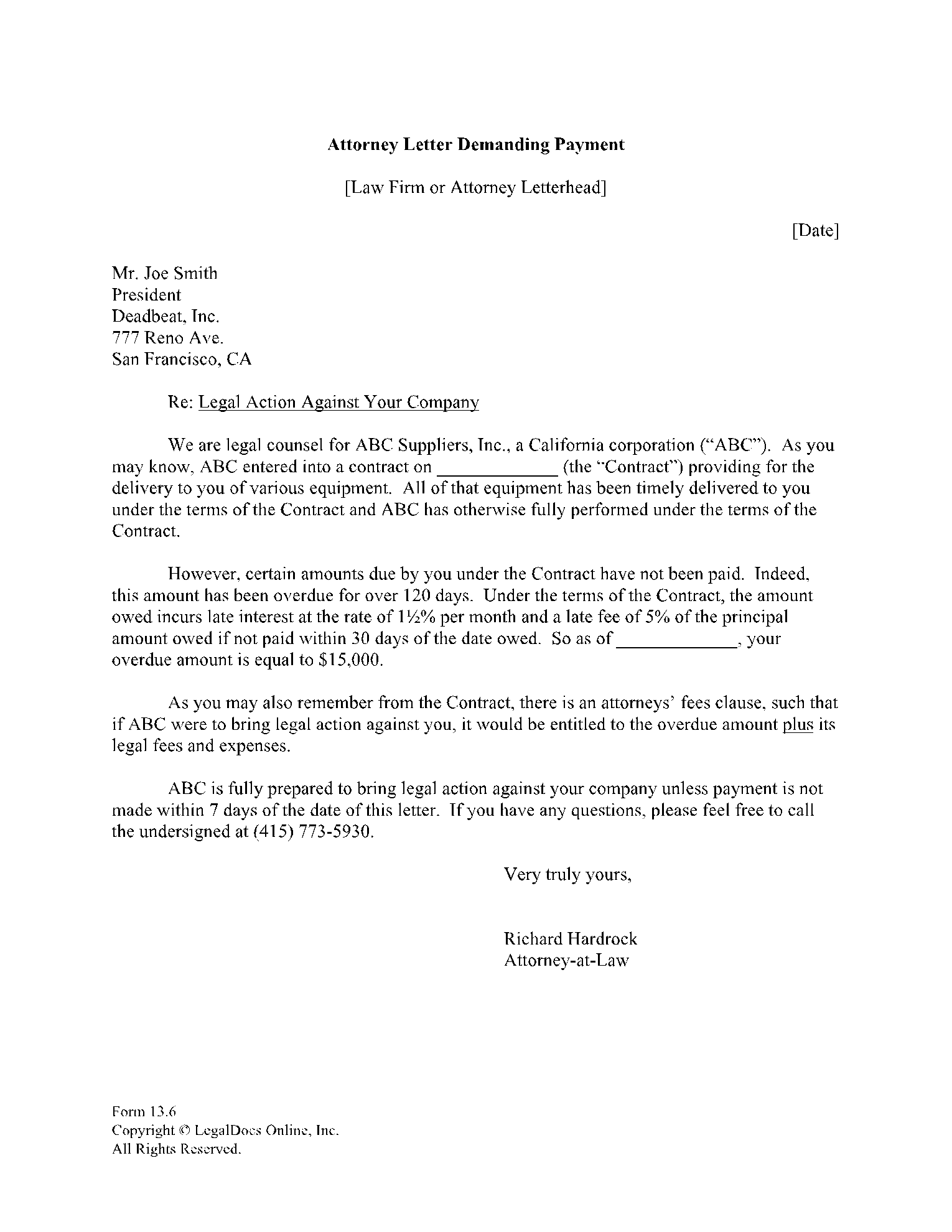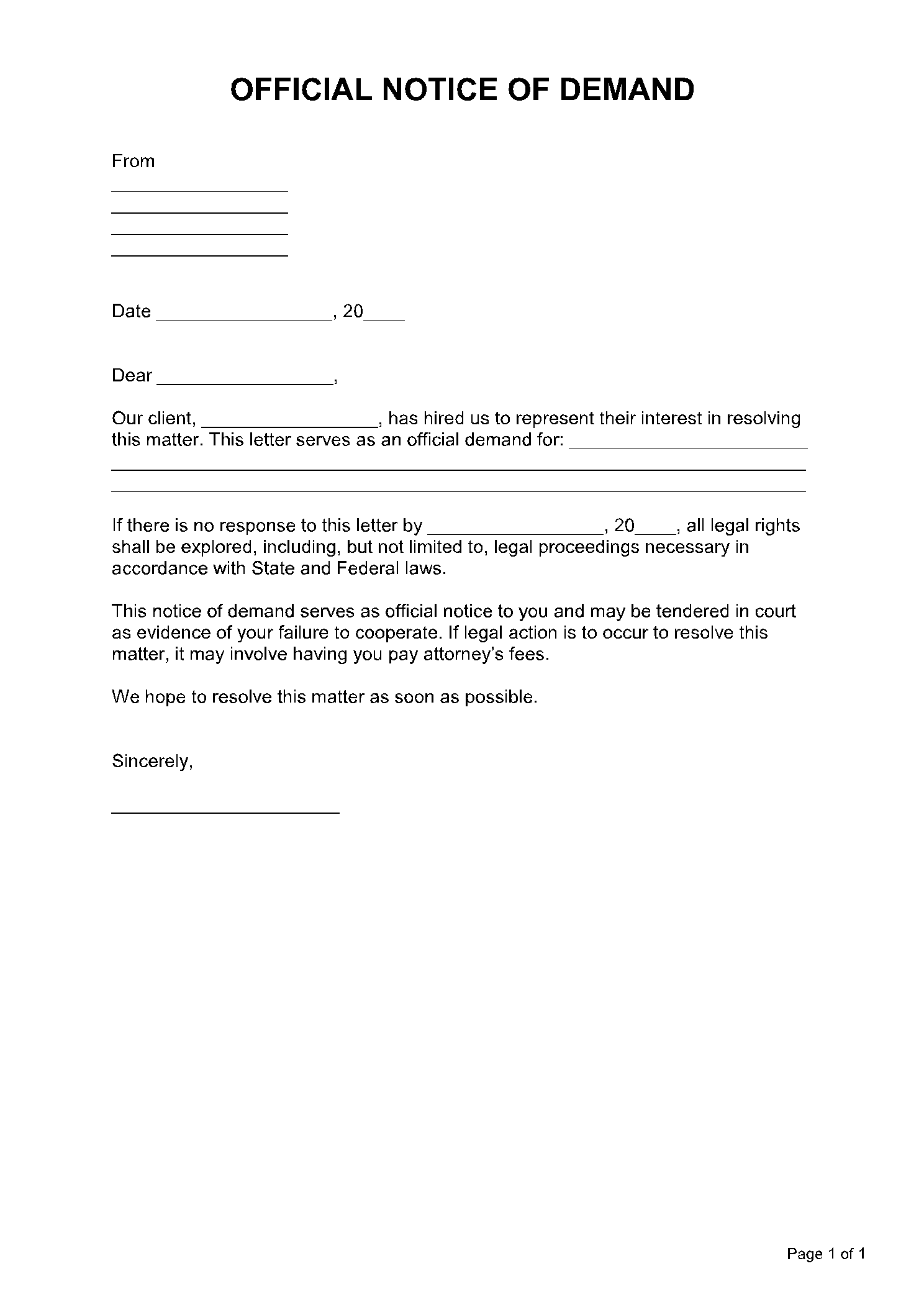Attorneys make demands on behalf of their clients via demand letters, requiring immediate action from the recipient. If no action is taken, the attorney then files a lawsuit against the recipient.
We cover everything you need to know about demand letters here. We also offer a link to a demand letter template at the end, if you want to draft one right now.
What Is a Demand Letter from Attorney?
A demand letter, usually drafted by an attorney, is an official notice of legal claim, restitution, or obligation. They are also sometimes called “letters of demand of payment” or “cease and desist” letters. They are sent by certified mail with a return receipt, which allows the sender to confirm the mail was received or not.
When and Why Do You Need a Demand Letter from Attorney?
Demand letters from an attorney can be drafted in one of many cases:
- Contract breaches
- Settlements
- Injuries
- Debt collections
- Insurance claims
- Malpractices
- Pending litigations
- Property disputes
No one wants a long, costly, drawn-out battle in court. With a demand letter from an attorney, you can potentially resolve an issue before it ever goes that far.
The demand letter galvanizes the recipient into action. It tells them you’re serious about the particular dispute or claim, and that you are ready and willing to escalate matters. In many cases, it resolves disputes quickly.
A demand letter is a show of good faith – and is seen as such in court. It’s proof that you made the effort to resolve the matter without using up judicial resources, and that you gave the other party a fair chance to resolve the dispute.
How to Write an Attorney Demand Letter?
Be careful with the words you use in the letter. If you are insulting or threatening, it may be used against you in court at a later date. Make sure your demands are reasonable and compliant with local laws.
Be clear about why you’re writing the demand letter. Is it an intimidation tactic? Are you serious about filing litigation against the party? Do you want an insurance payment? Then follow the two simple steps outlined below:
1. Provide specifics
Cover the situation in detail. This is important because a court may view the details offered later and see if the instructions were offered clearly. Typically, you should include the following in the letter:
- A quick summation of the business relationship or transaction
- The problem – when, how, and why
- Discussion of prior restitution attempts – how you tried to solve the issue by informal means
If it was an accident or injury, describe the accident, medical treatments, and other relevant information.
2. Make the demand
Make an actionable demand. The recipient should know exactly what you want from them and how to meet your demands.
- Demand restitution.
- Provide a specific date or time to meet your demands.
- Optionally offer alternatives for repayment.
- Formally state what you intend to do if the recipient does not meet your demands.
Expert Recommendations
Here are some suggestions from experts on demand letters:
- Don’t forego demand letters. They save you time and money later.
- Use an attorney – they have experience in legal matters and are unlikely to make mistakes.
- Use a trustworthy courier service if you know the recipient is hard to reach.
- Make copies of the letter before you send it.
- Send a follow-up letter if the recipient doesn’t respond.
- Be prepared for counter-offers.
Conclusion
Demand letters, whether drafted by you or your attorney, show the other party you’re serious about settling the matter. It puts pressure on the party, forcing them to respond.
You can use the free demand letter from attorney template on CocoSign to draft a concise, formal letter in minutes. It’s fast and easy. We also offer templates for other formal scenarios.

